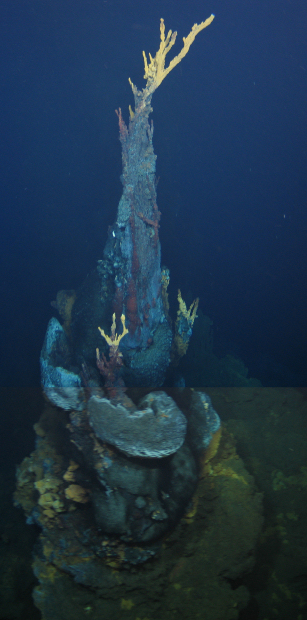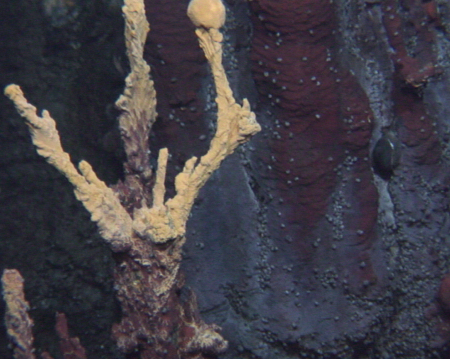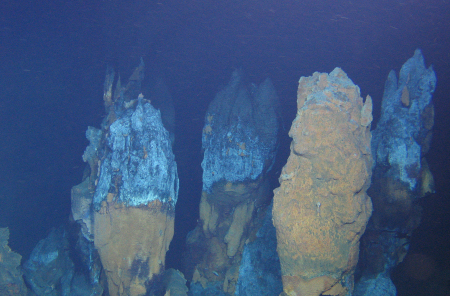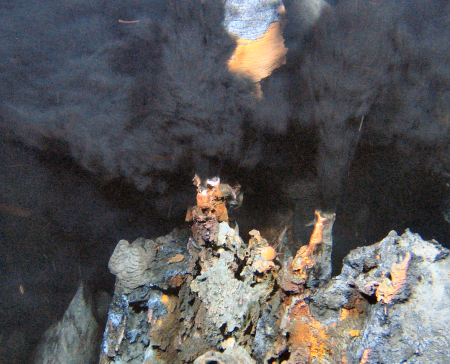Monday 28th November
Overnight, the HyBIS vehicle reconnoitred the vent field further, and showed us that there are more vent chimneys than those we saw on yesterday's ROV dive. The terrain was challenging for HyBIS operations: the vent field here is like a maze, with steep walls and huge extinct chimneys.
Once HyBIS was back aboard, we prepared for another dive with the ROV. Its objective: to find the source of the "black smoke" that we encountered around 80 metres above the seafloor at the end of the first dive.
"Black smoke" is the nickname for the cloud of mineral particles formed by the hottest fluids that gush from vents. The animals living around "black smoker" chimneys can differ from those found in areas where vent fluids are cooler, which we saw on yesterday's dive. We therefore need to find the black smokers for a full picture of the marine life here.
The ROV reached the seafloor just before 10 a.m., and we began the dive by returning to the cooler vent that we surveyed and sampled yesterday. From this known point on our map, we then explored further, and found an active "black smoker" chimney. The chimney was an unusual shape and colour: crowned with bright orange "branches" of mineral deposits, and its sides streaked with a red-coloured mineral.

Black smoker chimney, approx 4 metres high

Close-up of unusual chimney mineralogy
We surveyed the chimney with high-definition video to map the distribution of species on it, some of which we had not seen previously in the vent field. But we decided not to collect any specimens, to avoid any risk of damage to its delicate geological structure. So the search for further smokers continued; in any case, this single chimney could not be the sole source of the smoke that we encountered above the vent field.
Returning to the heart of the area we had already explored, we struck out in another direction. As we dropped into a deep gully, the view on all our cameras became obscured by black smoke, blowing towards us in the current from as-yet unseen smokers up ahead. Pulling up and manoeuvring to drop down on the "upwind" side, we found a ring of five chimneys, with black smoke gushing from them.

Ring of chimneys

Close-up of black smoker venting
We set down to collect specimens of the marine life around the black smokers, before using our remaining dive time to try to complete our map of the vent field, returning to the smoker that we first found. The vents we have seen seem to lie along a line, perhaps resulting from an underlying fissure. We found another tall chimney along this line, and ended our dive by collecting specimens from it of yet another species we had not seen here previously.
The ROV returned to the surface, and the samples to the controlled temperature laboratory for "triage" - dividing specimens up for preservation by various methods, so that they can be analysed back home to identify them, reveal their nutrition and reproduction, and understand their relationship to life at vents elsewhere.
With the ROV back on deck, we launched SHRIMP - a towed camera system - to survey the seafloor overnight in an area north of the vent field, where previous Chinese expeditions found possible signs of yet more vents.
